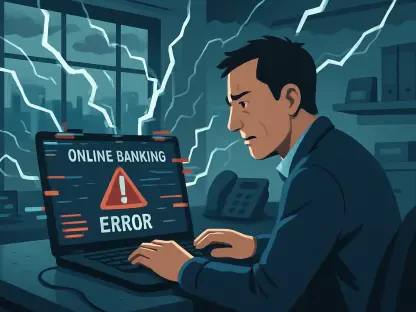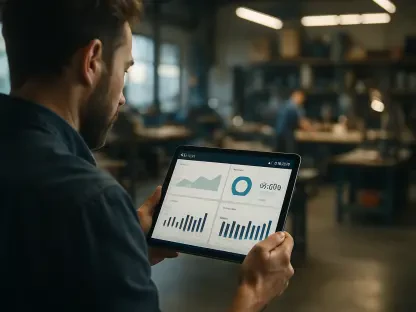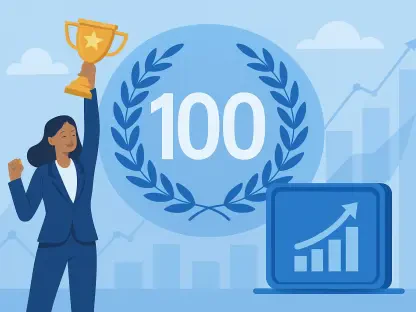The landscape of credit assessment and reporting is undergoing a significant transformation. Major U.S. credit bureaus—Experian, Equifax, and TransUnion—are increasingly integrating alternative risk data into their credit assessment models. This shift aims to provide a more comprehensive evaluation of consumer creditworthiness that moves beyond traditional credit history. By considering alternative data points, these credit bureaus are working toward creating a more inclusive financial system that promotes better lending opportunities for a broader range of consumers.
The Limitations of Traditional Credit History
Historically, credit bureaus have relied heavily on traditional credit history to evaluate consumer creditworthiness. This approach, however, has proven insufficient for a significant portion of the population, particularly those categorized as subprime or those with minimal credit histories. Traditional credit reports often fail to capture the full picture of a consumer’s financial behavior, leaving many without access to credit. The narrow focus on traditional credit metrics excludes many individuals who demonstrate financial responsibility through non-traditional means.
Recognizing this gap, credit bureaus have been working for years to develop products that incorporate alternative credit data into their assessment models. This shift is driven by the understanding that a consumer’s financial behavior and creditworthiness cannot be fully captured by traditional credit reports alone. By broadening the scope to include alternative data, credit bureaus can create a more accurate and comprehensive assessment of an individual’s financial health. Incorporating alternative data also helps ensure that more consumers get the credit opportunities they deserve, ultimately fostering a more inclusive financial landscape.
TransUnion’s TruVision Alternative Bank Risk Score
TransUnion’s recent introduction of the TruVision Alternative Bank Risk Score highlights the bureau’s commitment to blending both traditional and alternative data sources to offer a fuller picture of a consumer’s financial health. This product aims to form a comprehensive assessment of creditworthiness by combining traditional credit data with alternative sources such as public records and proprietary data. By leveraging alternative data, TruVision enables more accurate risk assessments and opens up new credit opportunities for individuals excluded from traditional credit systems.
The arrival of TransUnion’s product signifies another step in the ongoing shift by credit bureaus towards creating products that reach out to consumers outside the traditional credit-reporting system. This approach acknowledges that past credit activity, or lack thereof, may not always be an accurate representation of a consumer’s current creditworthiness. As such, incorporating alternative data ensures a more complete and dynamic understanding of a consumer’s financial behaviors, aiding both lenders and borrowers in making informed credit decisions.
The Role of Alternative Data in Credit Assessment
The push for alternative credit data encompasses various types of financial and non-financial information. For example, on-time bill payments, educational attainment, and employment history can provide valuable insights into a consumer’s financial behavior and potential risk. These data points, which may not be captured by traditional credit reports, are crucial for accurately assessing the creditworthiness of subprime borrowers and those with thin credit files. Such data becomes especially valuable when evaluating individuals who are financially responsible but lack extensive credit histories.
The overarching trend in the credit assessment market is a move towards more inclusive and holistic evaluation models. This evolution is driven partly by the rise of fintech companies that have introduced non-traditional approaches to credit assessment. Fintechs have demonstrated the potential of using alternative data to offer faster, more flexible, and inclusive credit products to consumers. Their success in identifying credit-worthy individuals through innovative data sources has encouraged traditional financial institutions to follow suit and modernize their assessment models, ensuring broader access to credit for all consumers.
Innovations by Experian, Equifax, and TransUnion
Experian, Equifax, and TransUnion have all launched products that incorporate alternative data to enhance their credit scoring models. Experian’s Experian Lift Premium, Equifax’s OneScore, and TransUnion’s TruVision Alternative Bank Risk Score are at the forefront of this market evolution. These products aim to expand financial inclusion and offer better lending opportunities to consumers who might be overlooked by conventional credit scoring models. With these new tools, consumers with non-traditional credit histories have a better chance of securing loans and other financial products.
Experian’s Experian Lift Premium uses rental payments and cash flow analysis to assess consumers with thin or no credit files. Equifax’s OneScore incorporates utility, subscription, and mobile payments as part of its alternative data framework, potentially enabling millions of consumers with subprime credit scores to qualify for near-prime or prime offers. By utilizing alternative data, these credit bureaus can provide lenders with a more nuanced view of a consumer’s financial behavior, thereby reducing risks and expanding access to credit for previously underserved segments of the population.
Addressing the Needs of Underbanked and Unbanked Consumers
The commitment of these credit bureaus to expand the definition of creditworthiness is evident. They aim to provide lenders with tools that give a more comprehensive view of prospective borrowers’ financial behavior. This approach helps mitigate the risk of lending to subprime borrowers while also providing these consumers with a pathway to improve their credit standing. By considering alternative data, credit bureaus can offer a lifeline to individuals who have been sidelined by traditional credit systems, thereby fostering greater financial inclusivity.
The challenges faced by underbanked and unbanked consumers in America underscore the need for more inclusive credit assessment models. According to data supported by Experian, as of January 2022, 19% of American adults, or 49 million consumers, had no credit score. Among them, 28 million were “credit invisible,” meaning there was no recorded activity to speak to their creditworthiness. Another 21 million had insufficient information to generate a score, making up the “unscorable” category. Additionally, 57 million individuals were in the subprime credit category. The traditional credit scoring system often fails to capture the full picture of a consumer’s financial health, particularly for these underbanked and unbanked individuals.
The Impact of Fintech Companies
The landscape of credit assessment and reporting is experiencing a considerable transformation. Major U.S. credit bureaus such as Experian, Equifax, and TransUnion are increasingly incorporating alternative risk data into their credit evaluation models. This evolution aims to deliver a more comprehensive analysis of consumer creditworthiness, extending beyond the traditional credit history framework.
By integrating alternative data points, including utility bills, rental payments, and even bank account activity, these credit bureaus are striving to foster a more inclusive financial system. The goal is to enhance lending opportunities for a broader spectrum of consumers, including those who might have been previously marginalized due to lacking a robust credit history.
This modern approach not only benefits consumers by providing them with more opportunities to secure loans but also aids lenders in making more informed decisions. Overall, the use of alternative data sources promises to be a game-changer in the credit industry, promoting fairer and more equitable financial practices.









